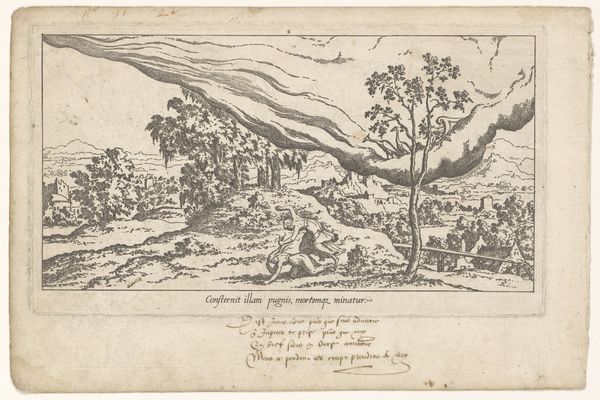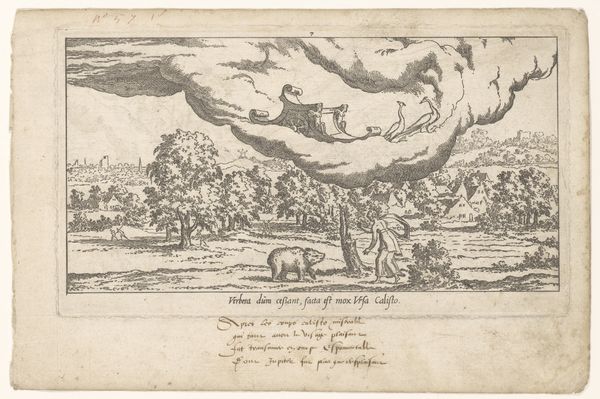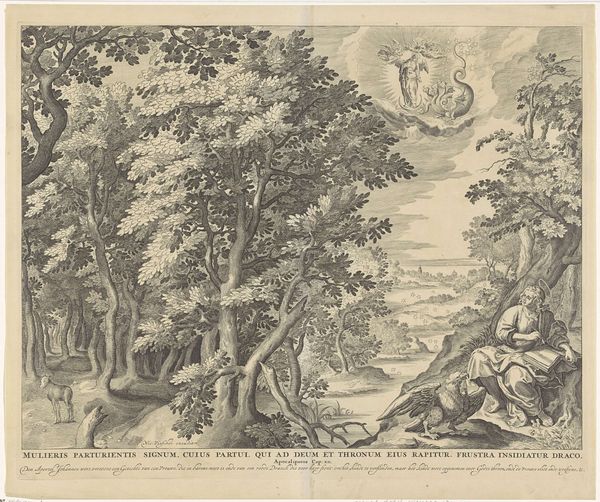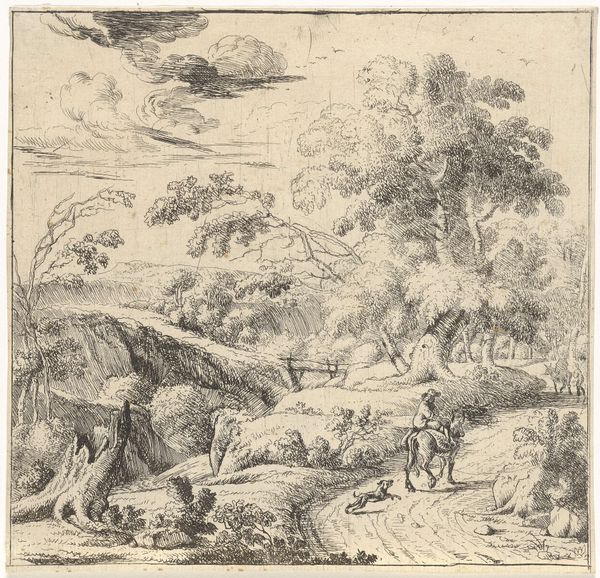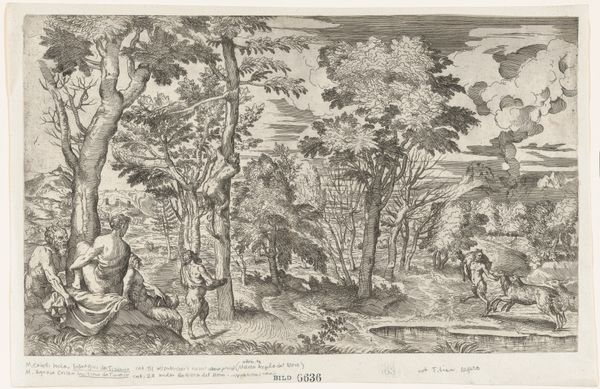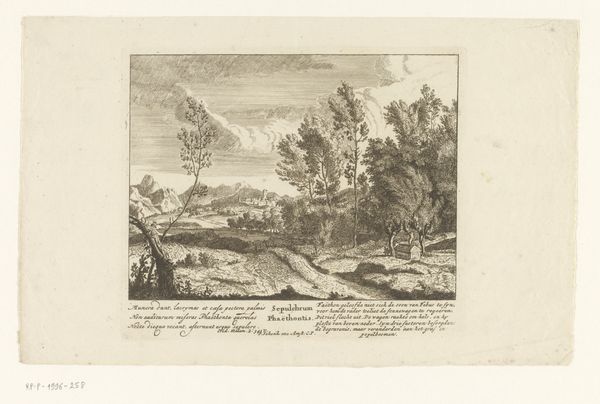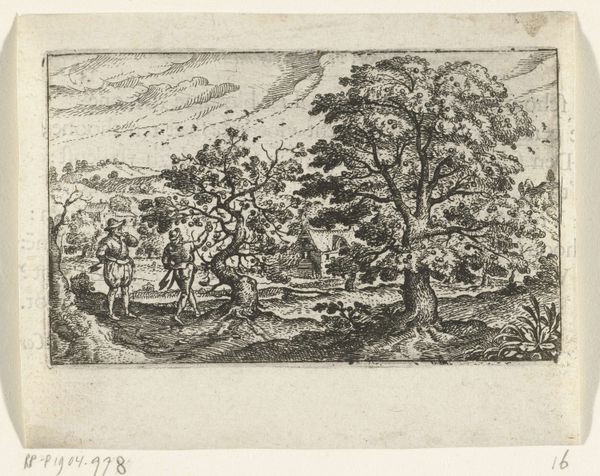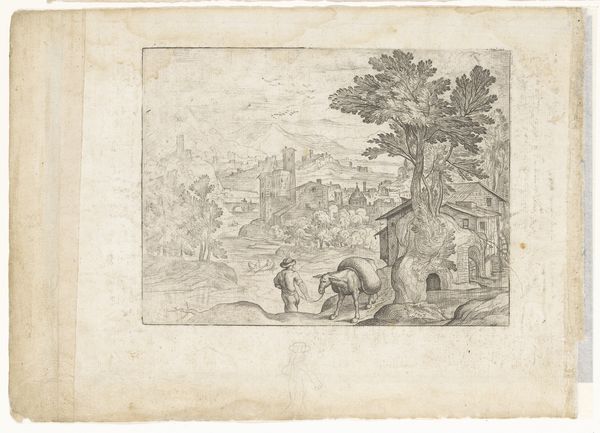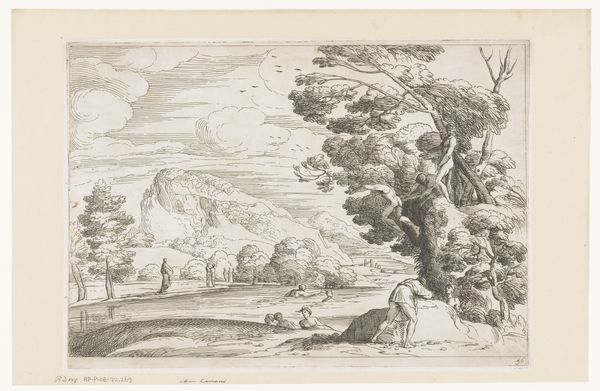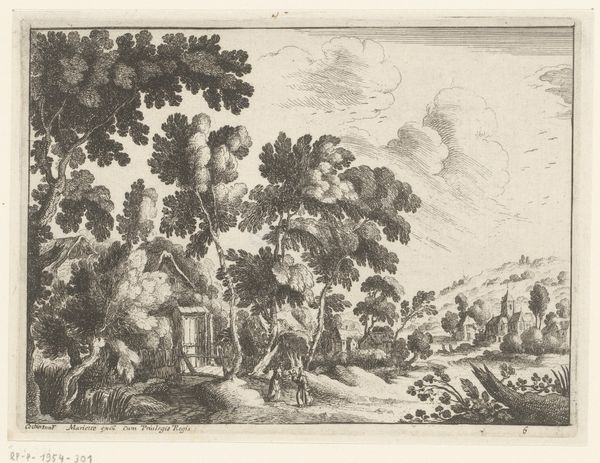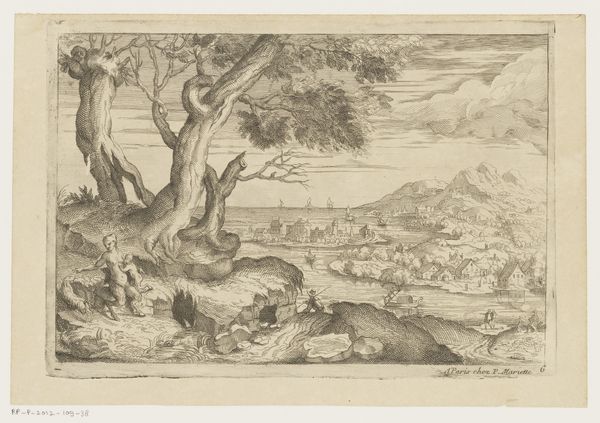
drawing, print, ink, pen, engraving
#
drawing
#
allegory
#
pen drawing
# print
#
landscape
#
mannerism
#
figuration
#
ink
#
pen
#
engraving
Dimensions: height 174 mm, width 262 mm, height 131 mm, width 233 mm
Copyright: Rijks Museum: Open Domain
Curator: Here we have Lèon Davent’s print, made around 1547-1550, entitled, “Callisto wordt door Jupiter opgenomen in de sterrenhemel,” or “Callisto is taken up into the heavens by Jupiter." It’s an engraving in ink and pen, depicting a scene from Ovid's Metamorphoses. What’s your immediate impression? Editor: A dramatic landscape! I'm drawn to the contrast between the dark, dense woods in the foreground and the burst of light and celestial activity in the sky above. There's a tension here; someone flees from the divine presence. Curator: The narrative plays out across different realms. In the foreground, we see a figure, presumably Callisto, running, maybe fleeing a forest landscape. And then there's the transformative moment where Jupiter, on his chariot, pulls her up into the stars. We have this duality in the representation. Editor: Absolutely, this is speaking to much more than just classical subject matter. You mentioned Callisto running, which is so central to my read: Consider the narratives of sexual violence that underpin the tale of Callisto in Ovid. Here, the fleeing figure underscores power dynamics. I would look into questions such as: Who does mythology leave behind? How does power inform our understandings of the “canon?” And whose bodies get consumed by mythology? Curator: I see it as an artistic comment on social power and the authority that shapes visual imagery. Take, for instance, the positioning of Jupiter. His depiction is in line with contemporary ideas about God the Father, emphasizing male dominance as natural. And if we extend this perspective further, perhaps this work embodies certain aristocratic presumptions prevalent at that time. Editor: Right, and it demands that we think intersectionally about who gets remembered, whose voices prevail, and which injustices have shaped our narratives. It highlights how dominant structures legitimize themselves and create the very meaning of cultural stories and archetypes, don't you agree? Curator: That’s a very relevant reading of the print. Davent's piece offers us the scope to explore socio-cultural values inherent to mythology and their relationship to contemporary beliefs in society. I guess it brings new, valid dimensions to this visual artwork. Editor: Agreed. Looking at it this way invites much more contemporary consideration of classical mythology’s continued relevance— and of how such myths actively inform today’s gendered, political realities.
Comments
No comments
Be the first to comment and join the conversation on the ultimate creative platform.
